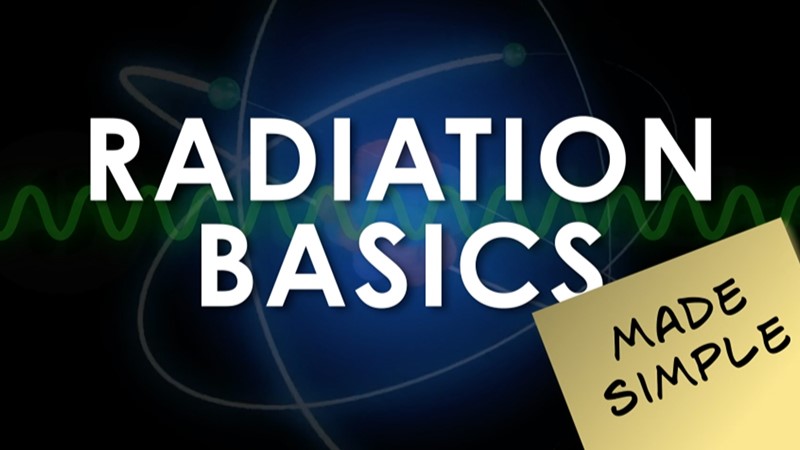What to know
Radiation Basics Made Simple is a training module that introduces participants to the fundamentals of radiation and radioactivity.

Training overview
Radiation Basics Made Simple features an enhanced lecture-style video and interactive knowledge checks to deliver and reinforce key concepts. The training is divided into eight segments:
- Sources of radiation
- Radioactive decay
- Measuring radiation
- Biological effects of radiation
- Radiation protection
- Decontamination
- Environmental impact of radioactivity
- Responding to radiation emergencies
Segment 1: Sources of radiation
This segment introduces common sources of ionizing radiation and explains what makes radioactive atoms different from regular atoms.
At the end of this segment, viewers will be able to
- Identify forms of radiation present in our natural environment.
- Differentiate ionizing and non-ionizing radiation.
- Compare properties of radioactive atoms and non-radioactive atoms.
Check Your Knowledge
Segment 2: Radioactive decay
This segment describes how radioactive atoms release radiation to reach a more stable state.
At the end of this segment, viewers will be able to
- Explain how radioactive atoms release radiation to reach a more stable state.
- Recognize the relationship between radioactive decay and half-life.
Check Your Knowledge
Segment 3: Measuring radiation
This segment describes common radiation measurements, the units used for these measurements, and different types of instruments that can detect radiation.
At the end of this segment, viewers will be able to
- Identify common types of radiation measurements.
- Recognize the units used for different radiation measurements.
Check Your Knowledge
Segment 4: Biological effects of radiation
This segment describes radiation health effects and how our bodies react to radiation exposure.
At the end of this segment, viewers will be able to
- Explain what can happen to a cell when it is damaged by radiation.
- Describe how the radiation dose and dose rate affect the body.
Check Your Knowledge
Segment 5: Radiation protection
This segment introduces best practices for working safely with and around radioactive material and discusses ways to limit your radiation dose.
At the end of this segment, viewers will be able to
- Identify basic protective measures to minimize radiation exposure.
- Discuss the principle of ALARA (As Low As Reasonably Achievable).
Check Your Knowledge
Segment 6: Decontamination
This segment describes ways to minimize or remove radioactive contamination.
At the end of this segment, viewers will be able to
- Distinguish between external contamination and internal contamination.
- Describe ways to remove radioactive contamination from hair, skin, or clothing.
Check Your Knowledge
Segment 7: Environmental impact of radioactivity
This segment discusses the environmental fate of radioactive contamination.
At the end of this segment, viewers will be able to
- Describe how radioactive contamination can impact the environment.
- Describe how natural environmental processes and active remediation contribute to environmental recovery after a radiation emergency.
Check Your Knowledge
Segment 8: Responding to radiation emergencies
This segment introduces different types of radiation emergencies and discusses ways public health and partner agencies respond to these emergencies.
At the end of this segment, viewers will be able to
- Distinguish between radiological and nuclear radiation emergencies.
- Describe how public health and partner agencies respond to radiation emergencies.
Check Your Knowledge
Additional radiation resources
Environmental Protection Agency (EPA)
Nuclear Regulatory Commission (NRC)
Food and Drug Administration (FDA)
Radiation Emergency Medical Management (REMM)
Radiation Emergency Assistance Center/Training Site (REAC/TS)
